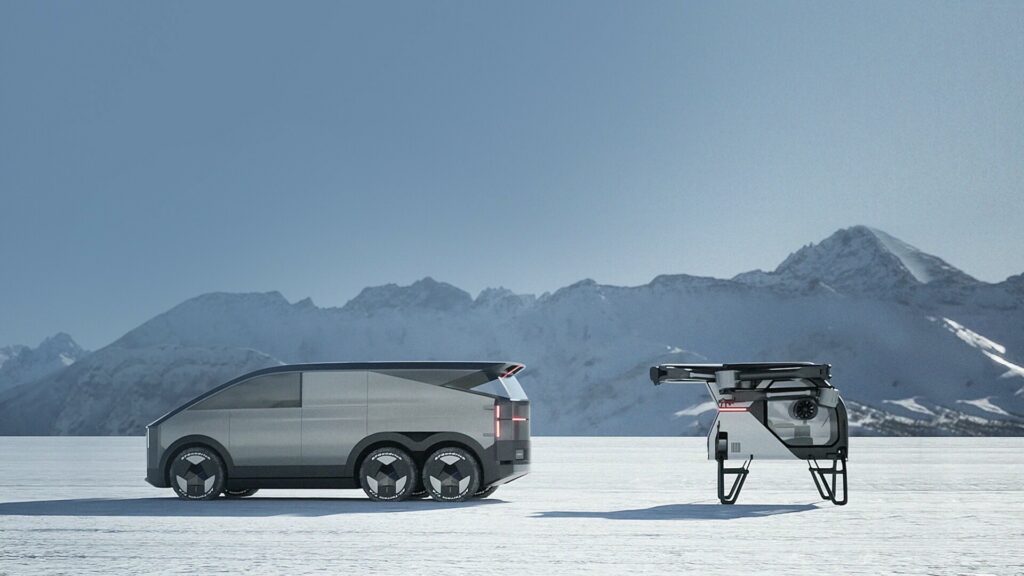- The Land Aircraft Carrier is a six-wheeled EREV van with an 800-volt high-voltage system.
- A special production facility will be constructed to build the unique combo.
- Trial production will start in the middle of next year.
Xpeng’s crazy AeroHT road-going aircraft carrier is a reality and will start pre-sales before the end of the year, with deliveries scheduled for 2026.
The crazy contraption was unveiled in October last year through the eVTOL and flying car subsidiary of Chinese EV maker Xpeng. It consists of a large six-wheeled van with a Tesla Cybertruck-like design that has a spacious cabin and a huge rear cargo area where a two-seat eVTOL drone can be secured. Xpeng apparently decided against building a road-legal car with rotors like other flying cars and believes this is a better solution to driving on the street and taking to the air.
Read: Xpeng AeroHT Is Making Its Crazy 6×6 Land Aircraft Carrier A Reality
As you would imagine, the Land Aircraft Carrier and the eVTOL drone (electric Vertical Take-Off and Landing) it comes with won’t be cheap, setting back Chinese buyers around 2 million yuan or $280,000. While that’s a lot of money, it’s cheaper than one may expect.
The Land Aircraft Carrier itself is based on an 800-volt high-voltage platform and is an EREV, or extended-range electric vehicle. It uses a small combustion engine that powers electric motors and a sizeable battery pack. While many details about this powertrain remain unclear, local media says it’ll have a combined range of around 620 miles (1,000 km).

Xpeng will provide the public with its first chance to see the eVTOL drone in action at an event in November, where it will be flown manually. When it hits the market in 2026, the drone will also be able to fly itself autonomously. The van and the aircraft received airworthiness certification from the Civil Aviation Administration of Central and Southern China earlier this year.
The Chinese brand will build the road-going and flying combo at a dedicated plant which is set to start construction later this month. Trial production has been penciled in for July 2025, and the facility will be able to produce over 10,000 units annually.









